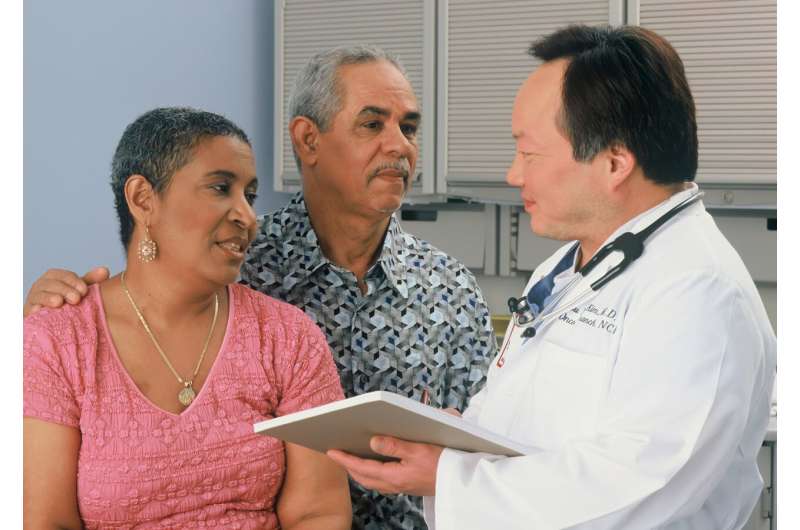This article has been reviewed according to Science X's editorial process and policies. Editors have highlighted the following attributes while ensuring the content's credibility:
fact-checked
peer-reviewed publication
trusted source
proofread
Older adults spend three weeks each year receiving health care outside the home: Study

A cross-sectional study of more than 6,500 adults aged 65 years and older found that, on average, older adults spent three weeks each year getting health care outside the home. In this nationally representative group, 11% of older adults spent 50 or more days each year receiving health care services. These days spent obtaining health care outside the home, or health care contact days, are a new patient-centered metric for evaluating care for older adults. The study is published in Annals of Internal Medicine.
Days spent obtaining health care outside the home can represent not only access to needed care but also substantial time, effort, and cost, especially for older adults and their care partners. These tradeoffs, along with known practice variation in health care, suggest that there may be both need and opportunity to optimize contact days for patients and their families.
This study suggests some targets for improving how we use these contact days. For example, it finds that half of the days spent getting a test are NOT on the same day as a doctor's visit, so doctors can do a better job coordinating tests with visits. It also finds that office visits, tests, and procedures are less likely to be on Fridays compared to other weekdays, even if that may be more convenient for patients.
Researchers from Brigham and Women's Hospital and Harvard Medical School studied Medicare Current Beneficiary Survey data for 6,619 adults aged 65 years and older to assess composition of, variation and patterns in, and factors associated with contact days. They found that, on average, older adults spent 20.7 days in the year getting health care outside of the home, of which 17.3 days were for ambulatory services like office visits, tests, and procedures.
The authors note that factors associated with more contact days included younger age, female sex, white race, non-Hispanic ethnicity, higher income, higher educational attainment, urban residence, more chronic conditions, and certain care-seeking behaviors (for example, patients who said they go to the doctor as soon as they start to feel bad).
According to the authors, these results show factors beyond clinical need that may drive overuse and underuse of contact days and opportunities to optimize this person-centered measure to reduce patient burdens.
The authors of an accompanying editorial from Weill Cornell Medicine and Beth Israel Deaconess Medical Center say this study provides important and salient insights on the extent to which patients interact with different components of the health care system, but patient preference related to contact days may vary significantly from patient to patient.
They say the findings cannot provide insight into whether contact days for individual patients are clinically necessary. They advise that research is needed, including qualitative research with patients and relevant stakeholders, to paint a more comprehensive picture of the circumstances surrounding health care contact days and what they mean for patient care.
More information: Health Care Contact Days Among Older Adults in Traditional Medicare, Annals of Internal Medicine (2024). DOI: 10.7326/M23-2331
Editorial: https://www.acpjournals.org/doi/10.7326/M23-3453





















